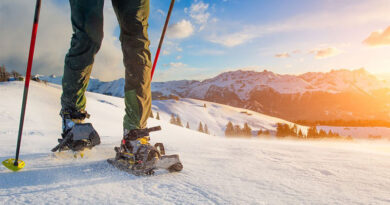Best Budget Snowboards of 2023-2024
If you are an avid snowboarder on a tight budget, don’t worry. In this article, I have compiled a list of snowboards that combines affordability with good performance on the slopes. An excellent value board can be a good option for a beginner snowboarder. It can also be used as a backup board if you are a seasoned rider. Considering their price, these boards provide a well-rounded ride without compromising quality. So, get one for yourself and hit the slopes without breaking the bank.
1. Arbor Foundation
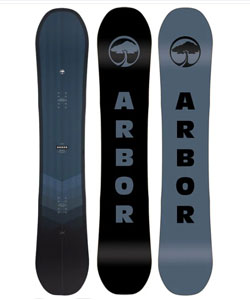
Category: All-Mountain
Ability Level: Beginner
Flex: Soft
Shape: Directional Twin
Arbor Foundation is a budget all-mountain snowboard for beginners. The snowboard comes with a medium flex and Arbor System Rocker that will handle just about anything. It is hard to find a board like this that is both soft and flexy and super fun to ride. This is a beginner board but experienced riders will also have a great time riding it. So, if you are trying to get into snowboarding and it’s your first day on the mountain, this is going to be an excellent option for you. This board is versatile, it’s got twin flex and it is really fun to ride. The board is also a good option for you if you want to learn how to get around in different styles of terrain or you want to learn where you want to push your different skillset on the mountain.
The Foundation board is comparatively easy to ride and maneuver regardless of your ability level. The rocker profile is responsive and forgiving across different all-mountain terrains. This board isn’t the fastest board out there. In fact, it is quite slow and unstable at high speeds. The dampness is also not great. You feel a lot of stuff and there is a lot of chatter at high speeds. I would not recommend going too fast on this board because it will feel very unstable. However, Arbor Foundation is a great board for riding switch. It is my favorite board I’ve ridden switch because of the rocker profile and soft flex.
What I like: A great value board for beginners that is both easy and fun to ride.
What I don’t: Unstable at high speeds and chatter builds up quickly with speed.
2. Salomon Lotus – Women’s
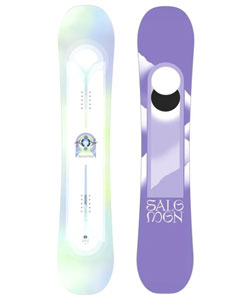
Category: All-mountain/freestyle
Ability level: Intermediate
Flex: Soft
Shape: Directional Twin
Lotus is a women-specific snowboard from Salomon. What makes it a women-specific board is the flex and some of the dimensions. The waist width and the overall widths of the board are narrower to fit a women’s size boot and the women’s weight on the flex of the overall board. The Lotus is a twin tip. It is a bit on the stiffer side, which means it is intended for the intermediate snowboarder. The stiffer flex makes it a little bit more stable especially at turns. This board is by definition a freestyle or park board. But you can also take it for some powder days.
The profile of the board is flat-out camber. It is flat in the middle, camber underfoot, flat again, and then super rocker in the nose and tail. This profile is going to help you in the powder along with the fact it is a directional twin. However, it is not much of a park board as a classic true twin board would be. This is the softest board that Salomon has for women. It has a super buttery feel, super consistent flex (really light and poppy), and an extruded base with a radial sidecut. The board is super precise and has a bite-free edge hold.
What I like: Flexible, responsive, bite-free edges, and a great option for beginners trying to level up
What I don’t: Can be too soft and bouncy for some resort riding.
See the Salomon Lotus – Women’s
3. Jones Frontier
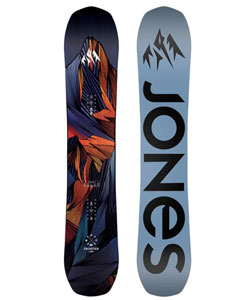
Category: Freeride/Freestyle
Ability Level: Intermediate-Advanced
Flex: Medium
Shape: Directional Twin
If you are looking for a more freeride-focused board but you also want a board that is a little bit more playful, the Frontier could just have your name all over it. This board is designed to be a versatile daily driver. The Frontier combines a floaty freeride nose with a playful softer flexing freestyle tail to create a board that can handle absolutely everything that you want to ride. It is built around a fully directional shape with a directional flex and setback camber. It gives all the performance advantages you get from riding a directional board. Unlike most freeride boards that come with super stiff tails, the Frontier has a slightly softer and more playful tail. It takes some aggression out of the board and makes it a lot more versatile.
Although the Frontier is the lowest price board in the Jones range, it is still jam-packed with full of features. You get a 3D contour base, which spoons both tip and tail to give smoother turn entry and exit. You also get a traction tech sidecut, which adds additional traction points in the edge for enhanced grip on icy surfaces. In terms of profile, you’ve got a longer rocker at the nose that will give a little bit more lift and then you’ve got a setback camber towards that back of the board and a little bit of rocker at the tail just to give you a real smooth transition out of the turn. It’s really easy to get the most out of it because it’s not that stiff.
What I like: Loads of pop, stable, and fun turning experience
What I don’t: Average performance on power snow and the pop is not very user-friendly
4. Yes. Basic
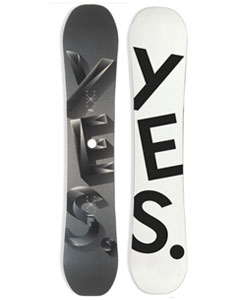
Category: All-mountain/Freestyle
Ability level: Beginner-Advanced
Flex: Medium
Shape: True Twin
Yes. Basic is a true twin blunt tip free for a style-focused board that’s aimed at just about every level of ride. It is a great option for ripping groomers and the park. It has a CamRock profile meaning that it has a rocker in the tip and tail and camber underfoot. Internally, the Basic’s classic combination of popular wood and biaxial glass delivers that predictable flex and feel that you’d expect in this kind of board whilst they are easy to repair and require minimal maintenance. If you are after a great value board, the Basic is going to be playful but a board that you can push down when you want to push it a little bit harder.
At first, it looks like any other board. But if you look closely, you will notice subtle differences. If you look along the sidecut, you will notice divots in the edges in line with the inserts. These what Yes. call it ‘underbite edges’. These divots disrupt the energy flow along the edge and help focus that energy toward the contact points and into the center of the side core. That shifting energy flow gives the board a dynamic turn entry and exit combined with a super stable feel through the center of the turn. It gives the Basic a level of response and control that you just wouldn’t expect from a board like this. It’s a fact that it does that while still being playful and easy to ride.
What I like: Very fun, playful, and easy to ride but can handle some tough snow/ice conditions.
What I don’t: Gets chattery and unstable at high speed.
5. Arbor Element Camber
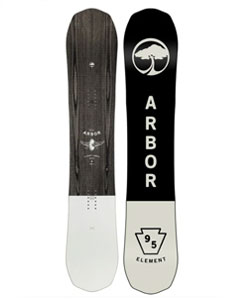
Category: All-mountain
Ability level: Intermediate
Flex: Medium
Shape: Directional Twin
The Arbor Element Camber is a twin snowboard with a medium flex that can handle a little bit of everything. This is a great option for someone who wants to explore riding without spending too much money. It is also a good option for somebody who wants to work on introductory topics like switch riding, park riding, steeps, etc. The board has a locked-in feeling of camber that allows you to press into the middle of the board. GripTech along with this technology allows you to ride in any condition you are looking to ride. The board is easy and fun to ride even at a little bit of higher speed.
Keep in mind that this board is designed for intermediate riders. It is not intended for those looking for a classic cambered snowboard. Instead, this a great board for someone going from a detuned edge or a rental experience and transitioning into something that lets them explore their riding at an intermediate level once you are linking turns. You will have the most fun with this snowboard on groomers. This does not mean that you cannot ride it in the park. For someone riding backcountry and exploring deeper snow, there are some other options within their line. But for a cambered twin with GripTech at its finest, Arbor Element Camber is a great step in that direction.
What I like: Playful and fun to ride.
What I don’t: Not built for fresh and loose snow.
6. CAPiTA Defenders of Awesome

Category: All-mountain/freestyle
Ability level: Intermediate-Advanced
Flex: Medium
Shape: True Twin
This board features CAPiTA’s V1 profile, which is rocker in the tips, flat section to before the insert pack, and then camber through the middle of the board. This is going to give you all the load, snap, pop, and drive of traditional camber. But that flat and rocker in the nose is going to create sweet spots for locking into presses. This will also help with that pop right where the camber comes down to the flat. So, when you engage it, you’re going to get a little bit more sprint. It also helps with ease of entry in and out of turns.
The big story with this board is they changed the core for this year. Supposedly, it wasn’t going to change the flex. What you get is softer tips and it is noticeably softer than it has been in previous years and that goes all the way to the middle of the insert packs. So, you just have these immense sweet spots that are super easy to press. It stiffens up slightly through the middle and there is a lot of flex. Since the board is soft, it also affects the stability. This is because, with the softer flex in the tips, you get more chatter that resonates right back underfoot. It is not as stable as it has been previously.
What I like: Predictable and playful
What I don’t: Less stable than the previous model
See the CAPiTA Defenders of Awesome
7. GNU Essential Service C2
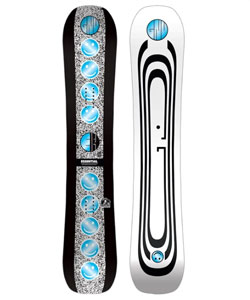
Category: All-mountain
Ability level: Advanced-Expert
Flex: Medium/Stiff
Shape: Directional
This is the board that replaced the Mullair snowboard. This board has GNU’s C3 camber profile, which is essentially their camber 2.0. It has a hinge point in the board’s dead center where the camber is a little flatter, and it flattens out as it descends outside the insert packs until the up kicks in the tip and tail. This gives you a load of traditional camber but makes turning a little less hooky and easier. Compared to the old Mullair, this board seems just hair-softer, which puts it more in the middle of the road. You get all-mountain, freeride flex with some freestyle characteristics. What you get is a slightly softer nose and the flex point right in the tail.
This board is fairly stable in dampness. You do get some chatter out the nose and a little bit of that will resonate back underfoot. But overall the main body of the board (from the front insert back to the tail) doesn’t get knocked around and bucked. You can charge through chunder, you can charge through lumpy terrain and it just sort of skips over the top or plows through it with ease. What’s nice about this board is the C3 camber profile is easy to engage. You don’t really have to fight to load it and when you do engage it, you get optimal rebound. This is a board that (off the tail) will pop exceptionally well.
What I like: Among the list’s top carvers and a truly powerful board.
What I don’t: Not built for deep snow.
See the GNU Essential Service C2
8. Nitro Prime Raw
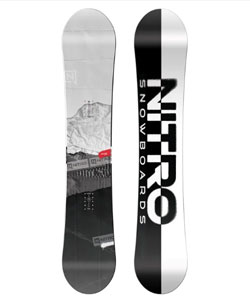
Category: All-mountain
Ability level: Beginner-Intermediate
Flex: Medium
Shape: Directional Twin
The Prime is the board for the person looking for an affordable snowboard that can do it all for all-mountain riding. The board is built around a traditional directional shape, which means it has a slightly longer nose and a setback stance. The setback stance is a 1.5cm setback on the sidecut. That combination of an extra bit of length and setback gives a little bit more volume at the front of the board. It also gives you great lifting powder and helps the board come up. This means you are not going to have to stand on your back leg all the time when you get to ride some deep snow. The slightly shorter tail lets you sit on the edge and drive the board out of the turn a lot easier when you are riding the piste.
In terms of profile, it utilizes the flat-out camber. The board is flat through the center and then you have an early rise at the tip and tail. That early rise lifts the contact points clear of the snow and lets the snow flow under the front of the board a lot easier. It works well for that all-terrain versatility. Lifting those contact points also makes the board playful as well. The board is constructed with Nitro’s Power Core. This is a full-length popular wood core that gives the perfect balance between strength, durability, and flex. The structural layers are formed from biaxial glass, which gives the board relatively soft torsional flex. The base is an easy-repair Premium Extruded FH Base. You don’t need to wax it all the time to keep it in tip-top condition.
What I like: A great board for learning, stylish and nimble
What I don’t: Not recommended for serious snowboarders.
Best Budget Snowboards: Comparison Table
| SNOWBOARD | CATEGORY | ABILITY LEVEL | FLEX | SHAPE |
|---|---|---|---|---|
| Arbor Foundation | All-Mountain | Beginner | Soft | Directional Twin |
| Salomon Lotus | All-mountain/freestyle | Intermediate | Soft | Directional Twin |
| Jones Frontier | Freeride/Freestyle | Intermediate | Medium | Directional Twin |
| Yes. Basic | All-mountain/Freestyle | Beginner | Medium | True Twin |
| Arbor Element Camber | All-mountain | Intermediate | Medium | Directional Twin |
| CAPiTA DOA | All-mountain/freestyle | Intermediate | Medium | True Twin |
| GNU Essential Service C2 | All-mountain | Expert | Medium/Stiff | Directional |
| Nitro Prime Raw | All-mountain | Beginner | Medium | Directional Twin |
How to Choose Snowboards?
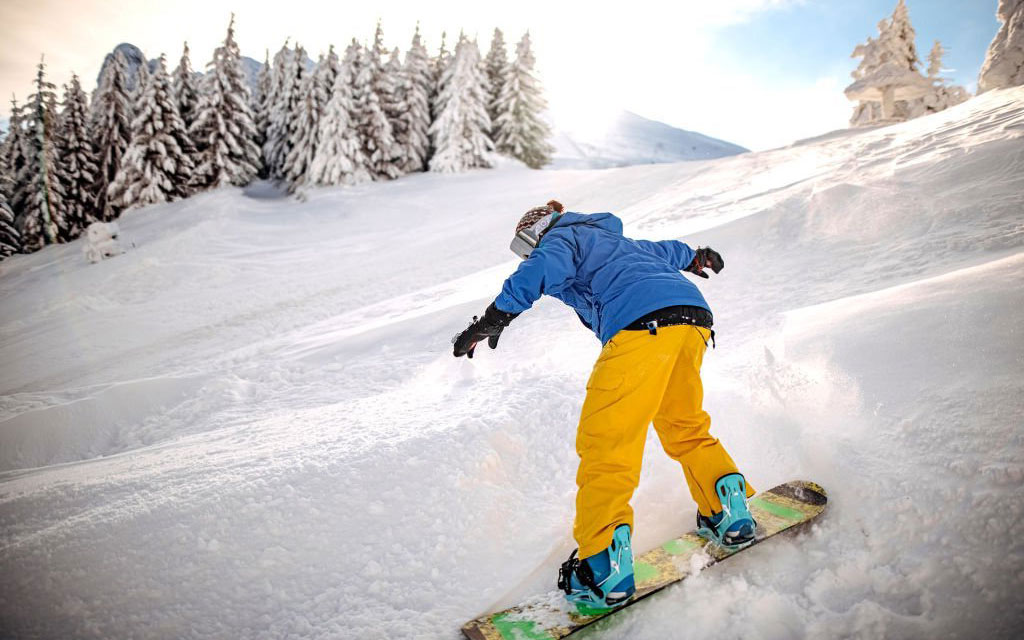
Whether this is your first time looking into buying your own board or you’ve bought boards in the past. Either way, I know how intimidating it can be when walking into a shop with so many options. So, in the below section, I will show you the main things to look for so you can find the perfect snowboard for yourself without being overwhelmed.
Shape
These are the main types of snowboard shapes.
Twin: For twin boards, the nose and tail are symmetrical. Whether you are riding forward or backward, the board will react the same way.
Directional: These boards typically have a longer nose than the tail and some other specifications that cause the board to not be symmetrical. Most people think of directional boards as one-direction snowboard and they turn off from the idea because they want to ride switch. However, this is incorrect. For most directional boards, you will have no problem riding backward if you wish.
Directional Twin: You may also see directional twin boards out there. This can mean a number of things such as a twin shape with a directional flex or a twin shape with a setback stance. This can be confusing but understand that a directional twin will ride great in whatever terrain the board is designed for as well.
Riding Style
This is what determines what terrain a board is best suited for. The riding styles can be broken down into three main categories; powder, park, and all-mountain boards.
Powder: As the name implies a powder board is made specifically for riding in powder or deep snow. Sometimes, you will see boards labeled under the name Freeride. These boards are meant to ride big backcountry terrain. With freeride or powder boards, you will usually see boards that are overall wider in width and sometimes even have a cut swallow tail. All of these aspects allow for the best floatability from the board making it easier to ride in deeper snow.
Park or Freestyle: These are going to be primarily twin shaped and meant to be ridden in the terrain park or in other freestyle settings. Because someone who is riding the park is generally spinning, landing switch, or taking off switch, the twin shape is ideal for this riding style.
All-Mountain: These snowboards are designed for the most versatile riding. You might typically hear these boards referred to as daily drivers because they can go almost everywhere whether you want to ride groomers, glades, moguls, powder, jumps, or anything else. With all-mountain boards, you will see both twin and directional-shaped boards. If you are not planning to go into the terrain park, I suggest looking at a directional shape. This will just make turning and carving that much more fun.
Flex
There is the longitudinal flex, which runs from nose to tail, and the lateral or torsional flex, which runs from edge to edge. When checking out a snowboard, you mainly will be examining the longitudinal flex. A softer flexing board is better suited for beginners as it is easier to control and manipulate. It will also be more forgiving making it easier to learn with.
A stiffer flexing board, on the other hand, is better suited for higher-level riders because it takes more energy to manipulate and therefore delivers more energy in response. Stiffer boards are designed for advanced riding as they want to go fast more often. Because of their response, they also provide more snap and power in their overall ride.
To properly inspect a board’s flex, wrap your arm around the underside of the nose and firmly press through the midsection of the board. Don’t be afraid to put a good push into it because you won’t break this board. As you do this, make sure the entire board is flexing and not just the tail. Often, I see people who use their knees or just one hand. Don’t be one of these people because this won’t show you much of a difference and it will just make you look like you don’t know what you’re doing.
Sizing
The main factors that will determine the proper size for you are your weight, height, and snowboard boot size. The most important of these is going to be your weight. Because the snowboard will know how much you weigh but it’s not going to know how tall you are. For example, I am six feet tall but I’m lighter than an average person my height so I might ride a board slightly smaller than the average six-foot person.
One of the most important things you should know about snowboard size is that there is not one perfect size for you. Well, you have one set size for say your boots; you do have a little bit of leeway when picking your snowboard size. If you can’t decide between two sizes, feel confident knowing that if you want a slightly more powerful board that will hold up better at top speeds, go with the bigger (159) size or if you want a slightly more nimble maneuverable board, go with the smaller (157) size. For your height, you’ll want your board to lie from below your chin to no greater than above your lip.
The last important thing in regards to size is finding a board with the proper width for your boot size. This is key because you do not want a board that will be too narrow for your boot. This will give you toe and heel drag when turning in a deep carve and that’s not something you want. If you have a 10 and a half and up boot size, you will want to look into getting a wide specific board. Most models come in additional wide sizes and they are denoted by having a W next to the sizing number.
Camber Profile
Three main types of profiles are rocker, regular camber, and hybrid. All of which will drastically change the ride of a board. Rocker or reverse camber will be the most forgiving and beginner friendly. Regular camber has the opposite shape of a rocker and will give you the most aggressive ride and be the least forgiving. The hybrid is a combination of both rocker and camber. Generally, you will see hybrid boards with a rocker section between the feet and regular camber under the feet. This gives a best-of-both-world scenario with the ease of the rocker and the stability of the camber.


